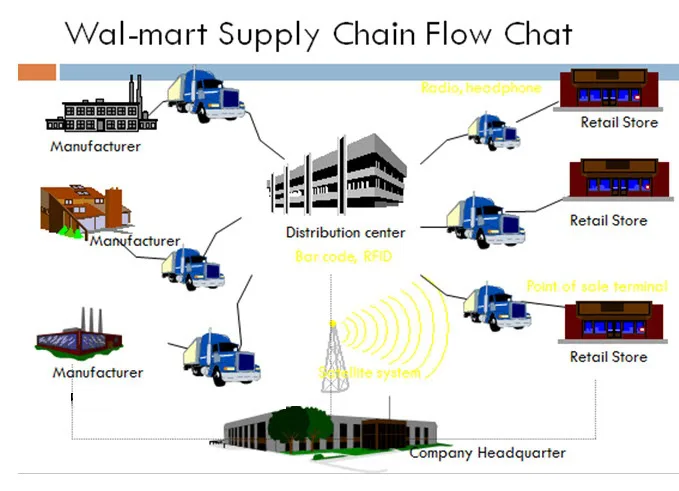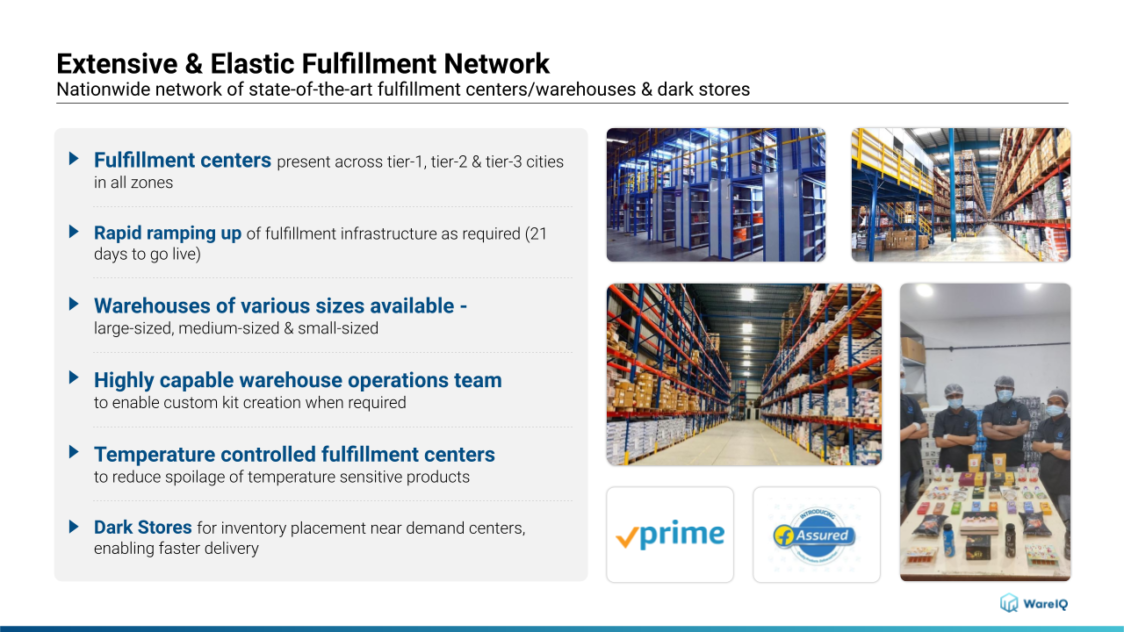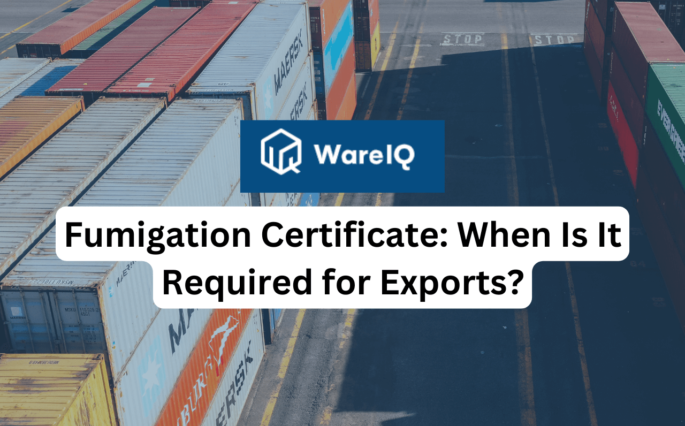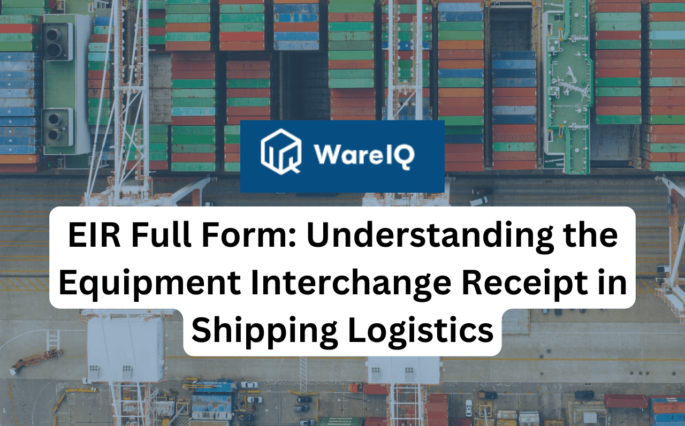What is Distribution Logistics? Definition, Objectives, Challenges and 5 Effective Suggestions to Improve Distribution Logistics Management for eCommerce in 2025

Logistics is the entire process involved in thorough planning, management, ensuring an adequate flow, and storing commodities and associated information and data for efficient processing. As a result, logistics establishes a unified, integrated, and optimal flow throughout the supply chain to achieve customer satisfaction.
But what if the product cannot be delivered to the consumer on time, and all initial efforts are for nothing?
That is why distribution logistics are essential to the eCommerce supply chain between the point of sale and the delivery of a consumer order. In fact, efficient distribution in supply chain management lies at the heart of an online business. Without it, delivering and meeting client expectations would be challenging to the core.
But it’s frequently a balancing act to get retail distribution correct. For starters, you must have sufficient inventory to satisfy demand while making the best use of available storage to minimise expenses.
So how can you ensure efficient business operations and delivery?
With well-thought-out distribution logistics planning, you can deliver on time, maintain a spotless delivery record, and optimise operations in response to shifting trends and technological advancements.
However, before you can improve distribution logistics for your company, you must first understand what it is.
- What is Distribution Logistics?
- Fundamental Tasks Involved in Distribution Logistics
- Logistics and Distribution are Two Different Terms
- Distinguishing Logistics and Distribution Logistics
- Objectives of Distribution Logistics
- Challenges in Distribution Logistics
- Types of Distribution Channel – Direct vs Indirect Distribution
- Advantages of Distribution Logistics
- 5 Tips for Improving Your Distribution Logistics Management in 2025
- Conclusion
- WareIQ As Your Distribution Logistics Partner
- Distribution Logistics Management FAQs: Frequently Asked Questions
What is Distribution Logistics?
The logistics component of the supply chain that deals with production and customer base is known as distribution logistics. Distribution and logistics management for direct-to-consumer fulfilment (DTC) focuses on moving the final items from a manufacturer or supplier to the retailers, fulfilment centres, and customers to complete the eCommerce fulfilment process. It consists of the fundamental planning, controlling, and processing procedures for the movement of commodities between manufacturing firms, retailers, and consumers.
Handling the products and supplies, shipping and moving them, and short-term storing are all tasks performed under distribution logistics. This creates ties in terms of structure, organisation, operations, and information between the industrial units and their clients. Therefore, implementing long-term structured data, efficient decision-making, and control mechanisms in distribution logistics is the key to a successful distribution system.
WareIQ, an eCommerce fulfillment company, empowers online brands with a superior-tech platform to compete with Amazon like service levels by bringing their average delivery timelines from 5-10 days to 1-2 days.
Fundamental Tasks Involved in Distribution Logistics
Transporting Goods: Moving items from manufacturers and wholesalers to fulfilment centres.
Supporting E-commerce: Ensuring sufficient stock is available to meet customer demand.
Quality Control: Checking the quality of goods during the distribution process and ensuring they meet the customer expectations.
Timely Order Fulfilment: Facilitating the fast completion of online orders, whether for domestic or international clients.
Distribution Management: Coordinating transportation, warehousing, and integration with 3PL services to streamline the logistics’ distribution process.
Logistics and Distribution are Two Different Terms
Though both logistics and distribution involve movement of goods, they’re not the same in business operations. Logistics refer to the broad aspect of transportation, storage and supply of goods irrespective of the parties involved. It can be moving goods to customers, distributors, or getting raw materials for production. Distribution is a small part of the entire logistics operations in a business. It also involves production planning, inventory management, and customer service.
Distribution management is limited to moving goods from one location to another. It allows businesses to narrow down their focus to a small segment of logistics and fine-tune the operations for accurate delivery of goods. The end goal is to ensure customer satisfaction.
Distribution Logistics Example: A company ships products from its factory in India to a warehouse in the USA using a logistics provider. The provider handles transportation, customs clearance, and delivers to regional distributors on time.
Distinguishing Logistics and Distribution Logistics
| Factor | Logistics | Distribution Logistics |
| Meaning | Manages the flow and storage of goods, services, and information. | Focuses specifically on the movement and management of goods from production to end customers. |
| Scope | Covers the entire supply chain. | Restricted to the distribution phase of the supply chain. |
| Task | To ensure the efficient flow and storage of goods in the entire business operations. | To ensure the smooth movement of goods from production to end customers. |
| Activities | Involves procurement, transportation, inventory management, etc. | Includes order processing, inventory control, packaging, and transportation. |
| Focus | On overall supply chain operations. | On the movement and management of goods within the distribution network. |
| End Goal | Optimising supply chain operations for efficiency. | Meeting customer demands, on time delivery and enhancing operational efficiency. |
| End Point | Buyers/Customers | End customers, retailers, or distribution centres. |
| Technological Integration | Utilises technology for tracking, management, and supply chain optimisation. | Employs specific technologies for enhancing distribution processes like real-time tracking and route optimisation. |
| Collaboration | Involves coordination among various supply chain partners. | Requires close collaboration with carriers, warehousing facilities, and third-party logistics providers. |
| Risk Management | Focuses on identifying and managing risks across the supply chain. | Concentrates on risks associated with transportation, delivery delays, and handling of goods. |
| Sustainability | Aims to reduce environmental impact and optimise resource utilisation across the supply chain. | It focuses on eco-friendly packaging, delivery-route optimisation to cut emissions and sustainable warehousing practices. |
| Regulatory Compliance | Ensures compliance with international, national, and local regulations across the supply chain. | It deals with compliance for moving goods. This includes customs, import/export rules, and safety standards. |
| Customer Interaction | May involve indirect customer interaction through supply chain efficiency and reliability. | It often includes direct interaction with customers. This is especially in B2C and D2C models, for delivery updates, returns, and feedback. |
| Cost Management | Management of costs related to procurement, production, and overall supply chain operations. | Reducing the costs in shipping, handling, and storage of distribution logistics. |
Objectives of Distribution Logistics
Distribution logistics’ primary objective is to balance the market’s supply of commodities with consumer demand.
The following are the primary objectives of distribution logistics:
Boost Distribution Efficiency In Supply Chain
The inbound and outbound processes are accelerated through distribution and logistics management, which increases supply chain visibility. Therefore, reducing overhead costs and enabling delivery operations within the allotted period is very useful. In addition, businesses can significantly benefit from managing inventory and storage capabilities and optimising warehouse operations to control costs better and boost overall operational effectiveness.
Meeting Client Demands
The primary goal of logistics management is to carry out effective planning on available inventory and transportation options to satisfy customers. This results in efficient freight movement and prompt delivery of goods or products. By giving clients pertinent information, logistics management improves their whole experience and enables them to stay informed. The most significant way to develop a synergistic relationship and an organization’s brand reputation is to analyse consumer needs.
Minimise Product Damage
Incorrect logistical handling, a lack of load unitizing, improperly designed packing, etc. can all result in this added cost to logistical charges. On the other hand, an effective logistics management plan does the least amount of product damage possible. Therefore, logistics management goals require proper monitoring of all product movements.
Operational Cost Reduction
The most incredible method to increase revenue and lower supply chain operating costs is to embrace logistics management. It enables the best possible use of raw materials and quicker product delivery, giving businesses a competitive advantage. However, it is helpful to reduce the cost of logistics by streamlining a complicated network of operations and product management. Intelligent route planning to control and manage the supply chain ecosystem can also increase business productivity.
Effective Information Flow
Improving internal business function and external partner communication is a crucial component of logistics management. Maintaining a transparent communication network enables companies to adapt quickly. Facilitating collaboration is one of logistics management’s primary goals. As a result, keeping a smooth communication channel aids businesses in coordinating with clients, suppliers, and vendors.
Quality Control
The logistics industry’s quality standards should be upheld in all areas. Companies should deliberate and never carry out tasks where a supervisor can see them. Corporate growth can be accelerated by using cutting-edge technologies to monitor the quality of all logistics activities. Therefore, one of the main components of logistics management’s aims is quality assurance.
Cut Back On Carbon Emissions
A dependable logistic system frequently introduces modern methods for lowering carbon emissions. Undoubtedly, the transportation sector is thought to be the leading cause of the environment’s adverse effects because of automobiles’ emissions. Therefore, logistics management aims to implement strategies for route optimization, process automation, and other actions that contribute to defining a standard for environmentally friendly and sustainable logistics.
Challenges in Distribution Logistics
Even if the goal of distribution logistics is to apply a cost-effective strategy overall, there are certain clear obstacles to overcome. They consist of:
- Increasing Fuel Prices – Transportation expenses rise due to rising fuel prices. The increased freight rates caused by the rising cost of gasoline make it challenging to reduce overall revenue.
- Lack Of Efficient Automation – It is difficult to track every cargo for a logistics company manually. For many small and medium businesses, putting in place appropriate tracking software is still a financially sound move.
- Logistics Laws and Regulations – In general, logistics is a process that operates on a worldwide scale. As a result, distribution logistics management is subject to several local and international laws and regulations. For shipments to continue without significant problems, businesses must stay current on the constantly changing norms and rules.
- Inadequate communication- Lack of collaboration between the concerned authorities can occasionally damage logistics functioning because the supply chain is a collection of multiple processes involving various teams.
- Lack of adequate infrastructure – One of the significant issues that service providers deal with is the physical state of the roads, the weather, connectivity, and port capacities, as well as the lack of developed transportation.
Types of Distribution Channel – Direct vs Indirect Distribution
Depending on the company’s demands, various channels can be included in a distribution logistics strategy.
eCommerce enterprises have a choice between direct and indirect distribution logistics options.
Direct Distribution Channel
The ability to purchase or receive items directly from manufacturing facilities is a direct distribution channel. Direct distribution operates solely by internalising the distribution management process and cutting out the middleman.
Direct Distribution Channels are more labour-intensive but economical. Inventory must be purchased and delivered directly to the online shop to finish the fulfilment operations. To effectively track and manage the entire process, they must invest in managing their inventory.
Brands that acknowledge they are responsible for their distribution must invest in streamlining logistics processes and warehouse management systems (WMS) to fulfil orders internally and better manage carrier relationships. The Direct Distribution Channel is suitable in terms of length and time.
Indirect Distribution Channel
An indirect distribution channel works with a third-party logistics supplier to meet their distribution needs. With less time for order processing, indirect distribution helps manufacturing organisations cut extra costs. Indirect distribution can delegate fulfilment to a third-party logistics (3PL) company, which will handle all the additional logistical responsibilities like warehousing, cargo pickup and delivery, and shipping on the client’s behalf. Without the urgent need to invest in a company’s fulfilment structure, an outsourced partner offers the essential resources, tools, expertise, and customer support. However, indirect distribution adds new layers of costs, which helps to drive up consumer costs.
Advantages of Distribution Logistics
The company’s distribution and fulfilment processes can be directly streamlined with logistics. Here is a good distribution logistics example can help business operations
- A more effective distribution network -The process and supply chain optimization are made simple by an effective distribution network with various logistics operations.
- Multiple fulfilment facilities- Distribution logistics operate widely across numerous places for quicker transportation, thanks to a significant network. With the right multi-distribution strategy, businesses may reduce the average delivery time.
- Reduced Expenses – A strong shipping plan guarantees customers access to a reliable, competitive, and affordable delivery alternative. Businesses can benefit from good shipping times at optimised and lower shipping costs, ultimately increasing customer satisfaction.
- Less risk associated with freight operations — The outsourcing partner takes on the risks with indirect distribution logistics, which lowers costs overall.
- Improved Visibility -A more transparent fulfilment procedure with no additional fees is made possible by strategic distribution logistics management.

5 Tips for Improving Your Distribution Logistics Management in 2025
Businesses should implement a solid logistics management strategy to boost productivity by reducing costs and guaranteeing consistent on-time delivery performance. The following are some of the most significant guidelines for a successful logistics management plan:
Develop A Well-Thought-Out Strategy
A sound strategy necessitates the acquisition of the items, adequate storage, and delivery of the commodities to their destination. Completing every step is essential because it helps your company be ready for unforeseen events and potential hazards. As a result, supply chain contingency planning is necessary for a smooth flow of materials and supplies.
Automated Workflows
Automation is essential for real-time data collecting and processing in the age of technology developments. The entire procedure can be optimised by automating several workflows. In addition, a well-integrated supply chain can also be facilitated by using modern technologies.
Managing various parts of your distribution logistics, from first-mile delivery to real-time inventory tracking to monitoring fulfilment and shipping performance could be improved by implementing the correct supply chain technology stack.
Online retailers adopted automated storage and retrieval systems (ASRS) which can save up to 85% of the floor space used by standard shelving and also offer lean inventory management to address the warehousing capacity issues and production shutdowns resulting from supply chain delays and inventory shortages.
Ensure the appropriate software integrates effortlessly with your current or intended tech stack before implementing it. Everything from returns management to freight shipment options to inventory planning can be part of a well-connected tech stack.
Efficient Transportation
For a superior consumer experience, transportation needs to be quicker and more affordable. Businesses can get a competitive edge by streamlining their overall approach to redesign their logistics management for faster product delivery.
Demand Projections
Making intelligent distribution decisions requires accurate demand forecasts. To strategically plan for demand and timely replace inventory, it’s critical to have the appropriate tools and KPIs in place.
Intelligent inventory forecasting may help you manage inventory, reduce shrinkage, cut storage costs, and maintain satisfied customers by utilising prior order information and information about upcoming events.
With the correct information, you can choose when to conduct a flash sale, stop selling a product that isn’t doing well, or decide how much inventory to order based on seasonality.
Partner With a 3PL
Partnering with a 3PL paves way for your business to set a good distribution logistics example. The ideal choice is to work with a tech-enabled 3PL or distribution partner like WareIQ to outsource distribution to professionals.
In addition to fulfilling orders, 3PL also handles warehousing and distribution, ensuring that your inventory is properly managed and distributed across several fulfilment facilities. Increasing client happiness helps you lower expenses while ensuring quicker, more accurate eCommerce fulfilment.
With access to shipping and fulfilment information, demand predictions, and other crucial supply chain metrics from their dashboard, you can manage and optimise your supply chain.
You can cut shipping expenses and transit times by allocating merchandise to distribution centres close to your client’s homes.
Conclusion
Distribution logistics covers all tasks in getting finished goods from the manufacturer to the consumer. Distribution logistics, which effectively links an organization’s production and sales, entails all the procedures like inventory control and shipping to guarantee the most significant delivery experience for the consumer. Distribution logistics connects a company’s production logistics with the purchasing logistics of its customers.
WareIQ As Your Distribution Logistics Partner
As B2B or B2C brand, you can outsource all facets of order fulfilment, from inventory management to returns management, utilizing WareIQ, a 3PL fulfilment solution.
Send your goods to one of our fulfilment facilities in India, and we’ll simplify your business processes.
WareIQ’s distribution network lets you offer same-day and next-day delivery to your customers. You can also decline RTO (Return To Origin) orders for your business and cut your fulfilment costs by up to 40%.
Utilizing WareIQ Fulfillment Services will allow you to focus less on internal fulfilment and more on other, more crucial aspects of your business.
You may enhance your eCommerce business and boost earnings by employing WareIQ’s efficient fulfilment approach.

Here is an overview of how WareIQ promotes brand expansion through intelligent distribution.
Multiple Fulfilment Centres For Faster Shipping
With fulfilment centres spread across tier-1, tier-2, and tier-3 cities, WareIQ’s extensive and dynamic fulfilment network lets you strategically store products across numerous locations to reduce transit times.
WareIQ’s fulfilment centres are in Bangalore, Chennai, Delhi, Mumbai, Kolkata, Ahmedabad, and Hyderabad. With this extensive fulfilment network nationwide, you can enable same-day delivery for your customers in your specific locations.
The WareIQ dashboard compiles past order data to assist you in identifying your best distribution plan, which enables merchants to reduce average delivery times.
Lower Shipping Expenses
A sound shipping plan means that you can provide your clients with competitive, affordable delivery options.
Additionally to having the ability to expedite the shipping, WareIQ can also assist you in optimising and lowering shipping costs, such as affordable 2-day shipping or free shipping (with a minimum cart value threshold that is higher than your average order value).
WareIQ partners with top domestic shipping companies and regional parcel delivery services. They bargain bulk shipping reductions, which are subsequently passed along to you and your customers.
Dependable and Efficient Analytics
Merchants can quickly assess distribution metrics, track fulfilment and shipment performance, and manage their supply chain operations with WareIQ’s robust data and analytics reporting tool without getting engaged in day-to-day operations.
You can utilize WareIQ’s dashboard for gaining insights such as-
- Inventory may be viewed, tracked, and managed across all sales channels and your distribution system.
- Manage product bundles and SKUs.
- Keep track of SKU turnover, days with inventory, and other things.
- Demand can be predicted by looking at historical trends.
- Sort all orders based on status.
- Pan India Fulfillment & Darkstore Network: Plug-and-play fulfillment infrastructure with no minimums, which is compliant with Amazon Seller Flex, Flipkart Assured, Myntra and other marketplaces
- Inventory & Network Planning Excellence: Best-in-class AI models for sales forecasting, product segmentation, and inventory management to reduce inventory by 40% and increase revenue by 10%.
- Vertically Integrated Fulfillment Tech Stack: Our Fulfillment Tech Solution supports integrations with 20+ top marketplaces & D2C platforms, and prominent national, regional and hyperlocal couriers, enhancing reach by covering deliveries for 27,000+ pin codes
- Supply Chain Productivity Applications: Integrate a host of supply chain productivity apps with a single-click to your existing CRMs, ERPs & accounting software to manage your logistics workflows from one command center. Use Apps like RTO Shield to get 100% RTO protection, Branded Tracking to turn your order tracking page into a profitable marketing channel, and many more.
Trusted by 300+ top Indian brands, we are helping them accelerate online sales and expedite their growth through a synergistic combination of advanced technology, robust fulfillment infrastructure & seller enablement services!WareIQ is backed by leading global investors including Y Combinator, Funders Club, Flexport, Pioneer Fund, Soma Capital, and Emles Venture Partner.







